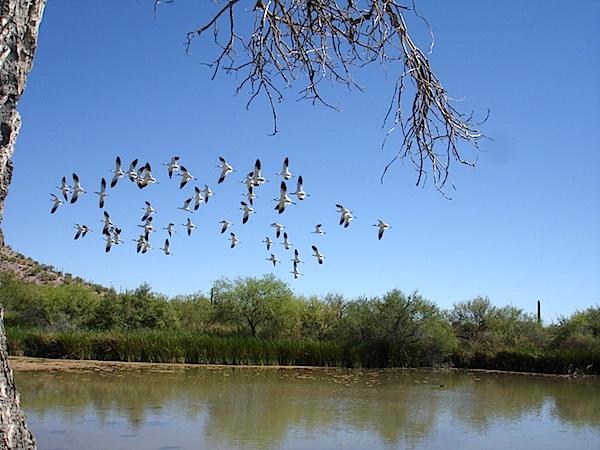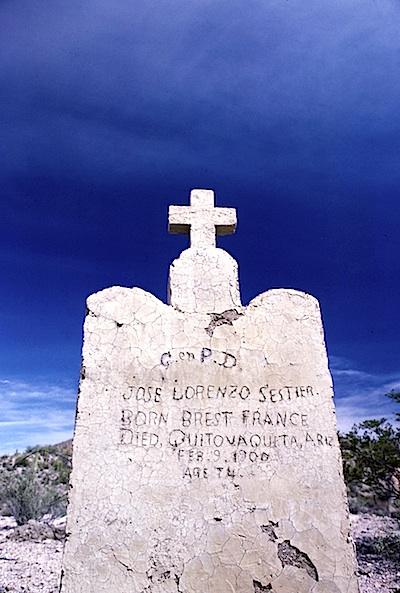
Located in the southwestern corner of Organ Pipe Cactus National Monument is an oasis that attracts wildlife, such as this flock of avocets/NPS
Today the Quitobaquito area with its historic irrigation canals and life-giving waters is again open to visitors to this monument in southern Arizona as an influx of Border Patrol agents across the region and an increase in park staff have led Organ Pipe Cactus officials to deem it safe.
Indeed, earlier this month park officials opened the entire 330,689 square acres for the first time since parts of Organ Pipe Cactus was closed in 2003 following the murder of Ranger Kris Eggle, who was shot and killed in August 2002 while pursuing members of a drug cartel in the southern reaches of the monument.
"We're excited. This has been a long time coming," Organ Pipe Cactus Superintendent Brent Range said during a phone call last week. "We're very excited to open it back up to the public. Let the folks get out here and start enjoying the place again."
It didn't take long for some park goers to head to Organ Pipe Cactus since the entire landscape opened on September 15. Already at least one backcountry permit has been issued, and the park has received inquiries about climbing opportunities, the superintendent said. "It's slowly but surely getting going again," said Superintendent Range.
Heightened presence of both Border Patrol agents in the region and Park Service law enforcement rangers in the park is said to have combined to make the visitor's experience safer. Since 2003 the monument's law enforcement ranks have quadrupled, from five to 20, while the Ajo Station of the U.S. Border Patrol has boosted its staff from 25 agents to more than 500 in the field with access to the park, according to park authorities.
Additionally, park documents note that "(W)here there used to be a barbed wire fence designating the border between Mexico and the United States there is now a 30-mile vehicle barrier fence and a 5.2-mile pedestrian fence. The fences have reduced the illegal access by vehicles through the desert and have almost eliminated high speed pursuits on Hwy 85. Surveillance and radio towers also aid in the tracking and apprehension of illegal smugglers."

History of past settlers near Quitobaquito stands in the form of gravestones/Patrick Cone
Numerical data that might show the effectiveness of the increase in forces and barriers is not available, however. Organ Pipe Cactus officials said data comparing border incursions a decade ago with those of today would have to come from the Border Patrol, but Border Patrol officials said they don't release that information and that perhaps the park has such data.
Inside Organ Pipe Cactus, the law enforcement staff is constantly on the move, according to Superintendent Range.
"They're assigned to work, especially now where we're at a point that access has increased to the park, it's going to be where the visitors go. Continually coordinating with Border Patrol on that activity as well," he said. "They work where they need to. Day to day, hour to hour. It just changes with the need of where they need to be."
With visitation ever so slowly increasing at the monument, Superintendent Range expects more than a few of those visitors to head to Quitobaquito in the southwestern corner of the monument.
"It's just beautiful," he said of the area, which since 2003 had been visited only during occasional ranger-led trips. "We have an endangered pupfish in there. It's just a really unique setting down there in the middle of this big area that has very little water."
Visitors to the monument are being advised to avoid strangers in the backcountry, and to contact either park staff or Border Patrol officials if they see anyone suspicious.



Add comment